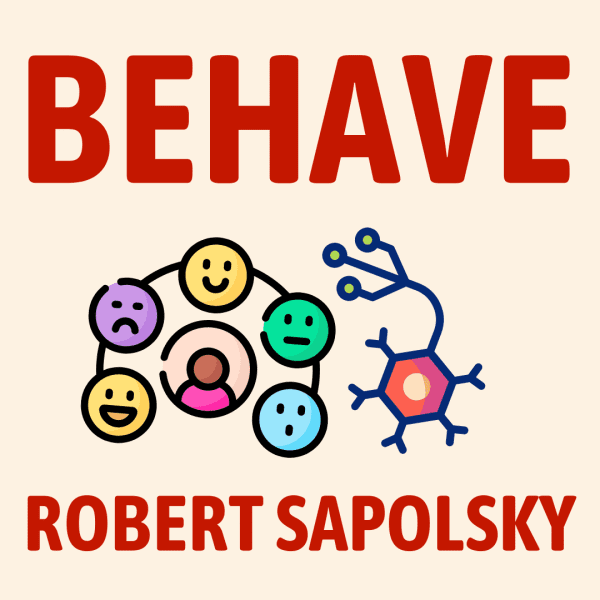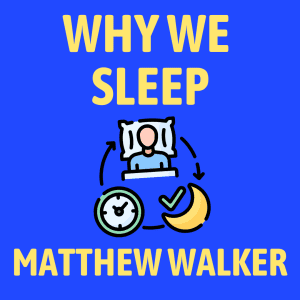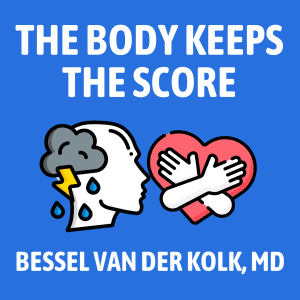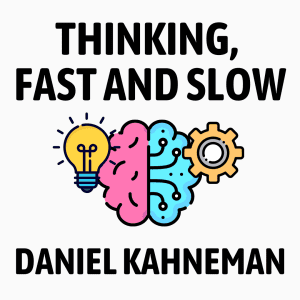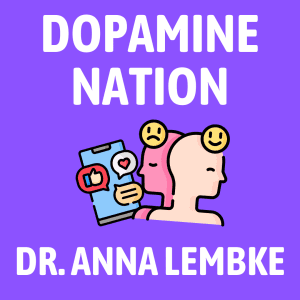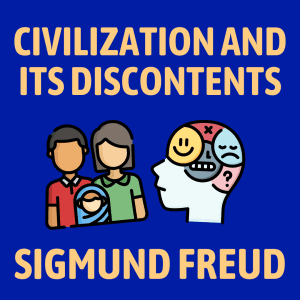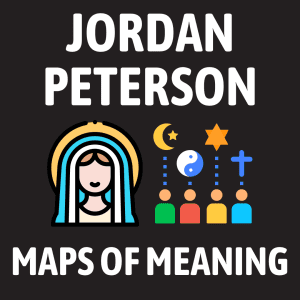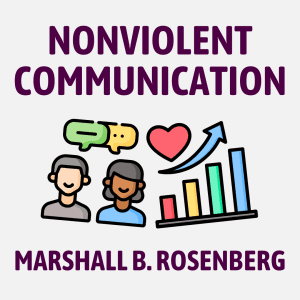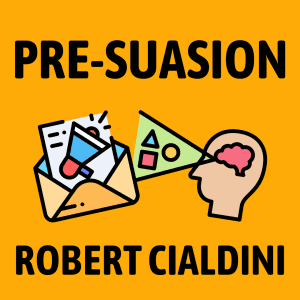As Abraham Maslow said, “When a man has a hammer, then everything begins to look like a nail.” And this couldn’t be more true than when we’re looking at the science behind human behaviors. For the same question, the experts from every discipline will give you a different answer.
- Ask a biologist what causes aggression, and they might tell you genes or hormones.
- Ask a psychologist, and they might say early childhood experiences or a maladaptive way of thinking.
- Ask a sociologist and they might start talking about the cultural, political and religious structures that shape people.
In other words, it’s complicated. And this is a theme that runs through this book. Robert Sapolsky, who is a Professor of Biology and Neurology at Stanford University, is very aware of the “buckets” that even great experts like himself can get stuck in.
When you think categorically, you have trouble seeing how similar or different two things are. If you pay lots of attention to where boundaries are, you pay less attention to complete pictures.
This book explains human behavior not just with neurons and hormones, but also through psychology, evolution, culture and history. In doing this, Sapolsky creates a more accurate picture of why we do what we do, without getting stuck in the “tunnel vision” of one particular academic discipline. So keep this in mind as you are reading this note. There are multiple lenses through which we can look at human behavior. None of them are really right or wrong. They are all intertwined. Human behavior is usually caused by multiple things interacting in complicated ways.
What occurred in the prior second that triggered the behavior? This is the province of the nervous system. What occurred in the prior seconds to minutes that triggered the nervous system to produce that behavior? This is the world of sensory stimuli, much of it sensed unconsciously. What occurred in the prior hours to days to change the sensitivity of the nervous system to such stimuli? Acute actions of hormones. And so on, all the way back to the evolutionary pressures played out over the prior millions of years that started the ball rolling.
So that’s the structure of the book. It starts with what is closest to us, the firing of our neurons and gradually works its way back through hormones, brain development, childhood experiences, genetics, culture and evolution.
🧠 1. The Triune Brain Model: Your brain consists of three layers responsible for instinct, emotion, and reasoning
To understand how the human brain works as whole, in a big picture way, there’s a very useful idea called the Triune Brain Model. This model was created in the 1960s by neuroscientist Paul MacLean, and it states that our brains have roughly three layers:
- The Reptilian Brain: This innermost core of our brain resembles the way reptile brains work. (In fact, mammals evolved from reptiles about 300 million years ago.) This part of the brain is responsible for our body’s automatic (or autonomic) functions like breathing, heart rate and body temperature.
- The Emotional Brain: Also called the Paleo-mammalian brain or limbic system, this part controls our emotions like anger and fear, social bonding, parenting and so on. Other mammals like dogs for example, also have an emotional brain which is why we understand when dogs feel sad, and vice versa.
- The Neocortex: Evolutionarily speaking, this is the newest part of our brain, responsible for abstract thinking, math, memory, language, music, long-term planning, etc. Other mammals like primates and dolphins have a neocortex, but it’s uniquely large in humans.
It’s important to understand this model is not strictly accurate, it’s more of a useful metaphor that helps us to organize and make sense of the brain. Even the creator of this model understood that. In reality, the brain is too complicated to cleanly divide into 3 parts. Nonetheless, it is roughly true that human brains evolved this way, from primitive survival drives to emotions to abstract thoughts. Now let’s take a deeper look at individual parts of the brain and what they do.
The Triune Brain Model is a useful metaphor to help us organize our understanding of the brain. The innermost layer is our reptilian brain which controls automatic body functions. Then we have the emotional or mammalian brain. Then the neocortex which does advanced and abstract thinking.
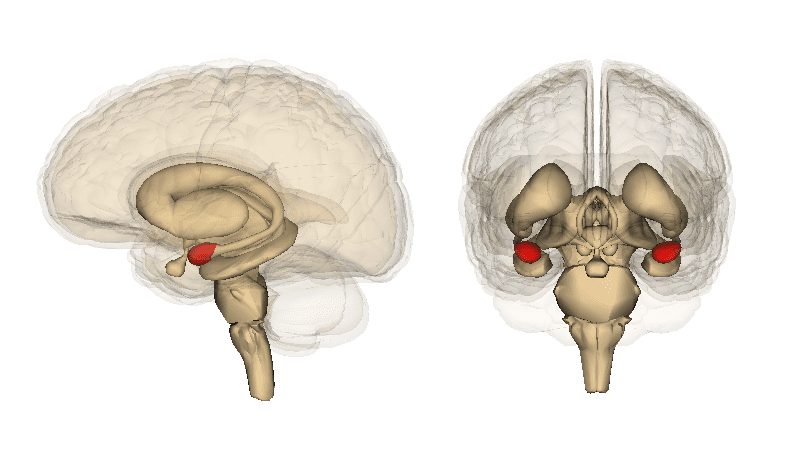
😱 2. The Amygdala: Your amygdala is where your brain regulates fear responses, anxiety, and aggression
When you’re walking outside and you suddenly jump 2 feet in the air because you mistook a water hose for a snake, that’s your amygdala doing its thing. The amygdala, which consists of two small almond-shaped clusters in your brain, is crucial in making us feel fear and anxiety.
One important job of the amygdala is to trigger the “fight or flight response” when there’s a threat nearby. You see a snake (or think you’ve seen one) and a cocktail of chemicals including adrenaline and cortisone are released in your body designed to help you overcome the threat. This is designed by nature to be a short term response, shutting off when we have reached safety.
Now, if our amygdala is being constantly triggered by the wrong things, this leads to chronic stress, which can seriously deteriorate health. We modern humans are constantly stressed because our amygdala is being triggered by imaginary threats there is no running away from, like a mortgage and taxes.
In people with PTSD (post traumatic stress disorder), the amygdala has become much more sensitive to mildly fearful things. Over the long term the amygdala even increases in size in people who have PTSD, phobias or anxiety disorders.
How Aggression is Linked to the Amygdala
Crucially, the brain region most involved in feeling afraid and anxious is most involved in generating aggression.
The amygdala has another surprising link: aggression. Stimulating someone’s amygdala with an electrode seems to trigger sudden anger and aggression. Some people have a rare type of epilepsy where their seizures cause physical aggression. Surgeons have removed the amygdala in some of these cases and much of the aggression associated with the seizures went away. In fact, in a darker chapter of medical history, some people who had no seizures but exhibited “overly aggressive behavior” also had their amygdala removed, which raised huge ethical questions afterwards. The results for those operations were mixed, with some anecdotal claims of decreased aggression.
Since we can clearly link the amygdala to aggression and certain diseases can affect the amygdala, this brings up big questions for the whole logic underneath our justice system.
On the first day of August 1966, Charlie Whitman stabbed his wife and mother, then went to the top of a University of Texas tower and used a rifle to kill 17 people and wound 31 others. The strangest part of this event was that for most of his life Charlie was known as a bright and intelligent person. He had an IQ of 138, putting him into the 99th percentile. As a child, he was an eagle scout and had a newspaper route. Later working at the bank his supervisor described him as “a truly outstanding person. Very likeable. Neat. Nice looking… A great guy.”
Sometime during his university studies (for which he earned a scholarship) everything began to change. He started complaining of big headaches. He began having angry outbursts at the slightest provocation. Feeling something was wrong with him, Charlie began writing extensive journal notes, with many entries urging himself to control his temper or expressing deep remorse for the latest outburst. Like when he threw a classmate our the door in anger. He began to overeat and became overweight. He wasn’t able to sleep for days at a time.
In his journal he wrote: “I do not really understand myself these days. I am supposed to be an average reasonable and intelligent young man. However, lately (I cannot recall when it started) I have been a victim of many unusual and irrational thoughts.”
A week before the shooting, he was a school psychiatrist who described him as “oozing with hostility.” There, Charlie expressed his concern with his temper and vividly described shooting people from the tower. A few days later in his suicide note he donated his assets to mental health foundations and asked for an autopsy to be done on his brain, to check if there was a biological problem as he suspected. When the autopsy was done, they found a walnut-sized tumour pressing into his amygdala.
So did the tumour cause the shooting? Not exactly, although there’s every reason to suspect that it had a large effect on his personality and the tragic outcome of his life. And in this story, a few important parts are left out, like how he joined the army to escape an abusive dad.
The Amygdala, the size of two almonds in our brain, plays a key role in fears, phobias, anxieties and the fight or flight response. Stress is when our fight or flight response is constantly being triggered by the wrong things, like a mortgage and taxes, and it can have very negative effects on health. The Amygdala is also crucial in generating aggression.
🧓 3. The Frontal Cortex: The frontal cortex manages decision-making and impulse control
Located just behind our foreheads is the newest and shiniest part of our brains called the frontal cortex. It’s newest in terms of having evolved most recently. The frontal cortex is responsible for long term planning, strategic decisions, regulating emotions, resisting impulses and more. Robert Sapolsky summarizes it like this:
The frontal cortex makes you do the harder thing when it’s the right thing to do.
In the 1960s, Walter Mischel of Stanford devised a now-famous experiment called “The Marshmallow Test” designed to test kids willpower. Here’s how it worked: kids were sat individually in front of a table with a marshmallow on a plate in front of them. They were told the researcher would leave and come back in 15 minutes. If they wanted to, they could eat the marshmallow. But if they could resist temptation until the researcher came back, they would get an extra marshmallow.
So what happened?
Well, a few kids ate the marshmallow right away, the average time was 11 minutes, and about one-third of kids lasted to the end of 15 minutes. But the researchers didn’t stop there, they followed up with the kids years and decades later. The results astounded them! It turns out the kids who were better at resisting the marshmallow (signalling better self control and therefore prefrontal cortex regulation), later in life had better SAT scores, more social success and resilience. Even 40 years later they had lower body mass index and more prefrontal cortex activation during a challenging task inside a brain scanner. Wow!
So the prefrontal cortex, which is all about long term planning and delaying gratification, seems to play a large role in life success. But don’t worry, it’s not just a genetic talent. These researchers found that some kids were better at resisting the marshmallow because they used better mental strategies, like thinking about something else or putting a frame around the marshmallow (pretending it was a picture rather than a real marshmallow). And teaching these strategies to other kids boosted their willpower too.
Let’s return to the topic of aggression, because the frontal cortex seems to play a role in regulating aggression. A 2007 review paper from the University of Ohio said: “In humans, many studies have reported a link between brain damage to the frontal cortex and increased aggressive behaviour. These findings are consistent with reports that individuals who rank highly on measures of reactive aggression show lower-than-average baseline activity in the frontal cortex.”
This is very interesting. So if the amygdala is where aggression is generated, it seems like the frontal cortex is where aggressive impulses and emotions are inhibited. In fact, the most common therapy for both anger and anxiety issues is cognitive behavioural therapy, which teaches people new ways of interpreting and processing life situations. It seems to be using the rational reasoning of the frontal cortex to retrain the amygdala.
The frontal cortex, located just behind your forehead, is used for strategic decisions, long term planning, emotion regulation, impulse control, etc. A famous study found that kids who could better resist a marshmallow for 15 minutes (signalling more frontal cortex activity) got higher SAT scores years later and more general life success. Brain damage or decreased activity in this part of the brain is linked to more aggressive behavior.
👶 4. Neurons and Brain Development: Adolescent brains are still developing, leading to impulsive behavior
Out of all the animals, humans take an incredibly long time to fully develop outside the womb. Animals in Africa must be on their feet and walking with the herd within minutes of being born, or else they won’t survive. Yet in most human societies, people aren’t really responsible for themselves until they’re 18 and move to college.
Why such a long time? Well, that’s how long it takes for a human to get at least “semi-adjusted” to whatever society they live in. Human societies contain incredibly complex rules, norms and demands. It takes no time for a squirrel to learn how to find nuts, but can take decades for a human to learn how to be a software engineer.
In fact, the human brain itself doesn’t really “set” until the mid-20s, that’s when it starts to resemble the brain someone will carry for their adult life. We’ll talk more in a minute about what happens in the brain during the shift from adolescence to adulthood. But first let’s take a minute to talk about how brain neurons work.
How is it possible that we can learn or remember anything?
Well, let’s start at a basic level: Neurons. Neurons are cells in your brain, they are a special kind of cell that can communicate to each other. They don’t touch each other directly, but send chemical messengers called neurotransmitters. When one neuron becomes excited enough (which means if its electrical charge becomes positive rather than negative), then it releases these neurotransmitters into a small gap between neurons called a synapse. Then the “ears” of the next neuron get the message and this makes the next neuron more excited also. And if it gets excited enough, then it will in turn send neurotransmitters to the next neurons it’s connected to.
That’s the most basic explanation of neurons, the synapses that connect them, and the neurotransmitters that allow them to communicate. Of course, if you spend any time looking at brain science in more detail, you’ll quickly find endless complications to what was just said. In fact, there are more than 86 billion neurons in our brains, each one connected with up to 10,000 other neurons. So it’s a hurricane of activity happening all the time.
So for a long time, scientists thought that when we learn something, new neurons must be created, or at least new synapses must be created between the neurons in our brains. Intuitively, this makes sense, but turns out not to be true.
In 1949 Canadian psychologist Donald Hebb published a super-influential book called The Organization of Behavior that proposed a different theory. This theory became a foundation for modern psychology. Hebb said that neurons “remember” things not by forming new connections, but by strengthening their existing connections. It’s like a forest trail, the more times someone walks down it, the more clearly defined it becomes. That’s why you’ll remember a book much better if you read it twice rather than just once. This theory has often been summarized as “neurons that fire together, wire together.”
Longer Term Learning – From Adolescence to Adulthood
Now let’s talk about longer-term learning and brain development. In general, as we get older, we seem to get more self control, knowledge and wisdom. So doesn’t it make sense to assume that our brains get larger or grow over time? Nope, we actually have more neurons in early adolescence, then it’s all downhill from there. Well, not exactly.
The teenage brain does have more neurons, but they are unorganized, uncoordinated and inefficient. Sort of like teenagers. But as we become adults, our brain go through a kind of evolution where unnecessary neurons are pruned, while at the same time the right connections between our neurons are being strengthened so learning is happening. This is a situation where less is more.
This evolution is supercharged by a process called myelination. Through adolescence, certain connections between the neurons are coated in something called myelin, and this helps the neurons communicate in a more fast and efficient way. Myelination is most effective when the neuron connection stretches a long way, so it’s really good at helping distant parts of the brain communicate with each other better.
By the way, this brain pruning idea isn’t 100% true. Even in adulthood, some new neurons are always being formed, a process called neurogenesis. For example, in the hippocampus, about 3% of neurons are replaced each month. This process is encouraged by activities like exercise and learning, but inhibited by certain stressors. One famous study looked at people who passed the notoriously difficult London taxi driver exam. Studying for this test can take 2-3 years and requires you to memorize 25,000 streets, plus 20,000 landmark and business locations. And they found people who passed the exam had developed a larger hippocampus than average.
Teenagers, Peer Pressure and Emotional Regulation
It’s measured that younger people are more risk taking and novelty seeking than adults. Well, no surprise there. As adolescents, most of us are itching to get out of the house, we crave new stimulation in the form of music, movies, travel and other experiences. Part of this novelty seeking seems to have something to do with dopamine, but the studies are conflicted whether young people’s dopamine response is more or less sensitive than adults.
The last part of our brains to mature is the prefrontal cortex, which helps regulate emotions and impulses. Well then, it’s no wonder young people are more likely to act on impulse with less consideration of the long term consequences.
And surprisingly, this late prefrontal cortex development may also explain peer pressure. In studies of peer pressure, teenagers are the most susceptible to it, with people 18 and older being less affected by others egging them on. How could this change happen? Well, some other studies have looked at how facial emotions are processed differently in adults and adolescents. For example, when adults look at a fearful face, first their amygdala activates, then their prefrontal cortex activates to decrease the emotional response. But in younger people, the prefrontal cortex activation is much weaker, so they are probably feeling the emotional reactions of other people more strongly.
Naomi Eisenberger of UCLA developed a “Cyberball” study where people lie in a brain scanner while playing a virtual game. In this game, a person believes they are tossing a ball with two other people. Actually, the two other players in the game aren’t really people, they’re secretly part of the computer program. And this program is designed to mimic social exclusion.
Here’s what happens. At first, the three players are throwing the ball to each other equally, but soon the two other players stop throwing the ball to the person, the real person in the brain scanner. And when the person feels rejected, what happens next in the brain is very interesting. There is activation in parts of the brain having to do with pain, anger and disgust like the amygdala and insular cortex. But very quickly, the ventrolateral prefrontal cortex activates and dampens those reactions. Inside the person’s head this probably looks like them saying to themselves: “Why do I care about this game so much? It’s not important enough to get upset about.” But in adolescents, when this rejection happens, the prefrontal cortex doesn’t activate as much, which means getting rejected hurts them a lot more.
More than other animals, humans take a long time to fully develop and human brains don’t really “set” until the mid-20s. Learning happens not by forming new neurons or connections, but by strengthening the existing connections between neurons. As we become adults, our brains lose unneeded neurons, but become far more efficient and well-coordinated. Adolescence may be more risk-taking, novelty-seeking and affected by peer pressure because of differences in dopamine and a prefrontal cortex that can’t yet effectively regulate emotional impulses and social rejection.
😃 5. Dopamine: Dopamine drives motivation, reward, and pleasure-seeking behavior
So inside the brain, one of the neurotransmitters our neurons use to talk to each other is dopamine. There are 4 pathways in our brains that make us what scientists call the dopamine reward system. It’s what makes things feel really good and it’s why we do most actions in the first place. For example, eating food when hungry releases dopamine in the brains of most species, and so does having sex. (In fact, humans only need to think about sex to trigger dopamine release.)
Understanding dopamine is critical for understanding human moods and motivations. Dopamine signalling is suppressed during depression by stress chemical and during anxiety by amygdala projections. Let’s talk about some interesting details that scientists have discovered in how dopamine works.
First, the amount of dopamine released in our brains is directly related to our expectations. So for example, if your pet dog is used to getting one treat as a reward, then two treats will make it ecstatic. It’s getting a huge surge of dopamine in its brain upon seeing the extra reward.
But the opposite is also true: Getting a smaller reward than expected results in a measly dopamine release. If your dog is used to always getting two treats and today you only give it one, it may look a little disappointed. And what if you get exactly the reward you expected? Well, not that much dopamine either. This is the common experience we all have of getting bored with something, whether that be a video game or particular dessert we loved.
What was an unexpected pleasure yesterday is what we feel entitled to today, and what won’t be enough tomorrow.
Dopamine soon becomes the learned ANTICIPATION of reward.
They did some studies with monkeys and raisins. They taught monkeys that pressing a lever ten times earns them a raisin reward. And at first, dopamine is released in their brains when they get the raisin. But then something surprising happens. After the monkeys do it a few times and learn to expect the raisin reward, then the timing of the dopamine release changes. They start getting a big dopamine release just BEFORE pressing the lever, in anticipation of getting the reward. What does this mean? Scientists think dopamine serves as a key fuel that motivates animals to act. Similar studies have been done with humans anticipating a monetary reward.
In other words, dopamine is not about the happiness of reward. It’s about the happiness of pursuit of reward that has a decent chance of occurring.
There was another interesting twist with the monkey-raisin studies. When the scientists changed the raisin reward to only be given 50% of the time the lever is pushed, guess what happened? Far more dopamine was now released in the monkey’s brains! The reward became inconsistent, but dopamine shot through the roof. This might explain why gambling is so addictive, the gambler is only rewarded by winning once in a while, but inside their brains are being flooded with dopamine every time they make a bet or pull the slot machine lever.
The dopamine reward system in our brains is why we feel great when we eat food, have sex or play video games. The amount of dopamine released is directly tied to our expectations. Getting a bigger reward than expected results in a much larger spike of dopamine, but this means we also quickly get bored with old reward that merely meet our expectations. When we learn that a behavior leads to a reward, then dopamine starts getting released before we act, not after we get the reward. This must be key to motivation.
🌀 6. Hormones: How hormones like testosterone, oxytocin, and cortisol influence our behavior
Hormones are chemical messengers released from glands throughout the body and influence many things like our mood, hunger, reproduction systems and so on.
Testosterone
Let’s look at testosterone first. As most of us can probably already guess, testosterone is higher in males than females in nearly all species. Testosterone is closely linked to aggression. For example, in prisoners, the higher the level of testosterone, the higher the level of aggression. This must be part of the reason why in every human culture and most animal species, males carry out most of the aggression and violence.
However, the truth is not as simple as testosterone = aggression. A 1977 study gave testosterone to groups of male talapoin monkeys, and it was found that testosterone only exaggerated pre-existing patterns of aggression rather than creating new ones. So a middle-ranking monkey who was given testosterone wouldn’t begin fighting the alpha males, he would just hassle the monkeys below him more often. Testosterone also increased aggression specifically during times of challenge, like when a restless young monkey tries to take the leadership spot from the current grizzled grey alpha.
Testosterone can decrease feelings of fear and it’s also responsible for more impulsivity and risk-taking behavior, by decreasing activity in the prefrontal cortex and its connection to the amygdala. For example, one study found that men with higher than average testosterone levels engaged in 13% more financial risk taking in an investment game.
Testosterone is also closely related to status-seeking behaviors. There was a study done where male skateboarder were asked to do tricks in front of either a male researcher or an attractive female one. You can probably guess what happened. In front of a female, the skateboarders attempted riskier stunts and had more successes, but also more crash landings. Testosterone levels were measured to be significantly higher in the skateboarders in the presence of the attractive woman, strongly suggesting that testosterone mediated the risk taking. It’s entirely possible that risky displays of physical strength, daring, health and vigour evolved as a way to entice potential mates and discourage potential rivals or challengers.
Testosterone makes us more willing to do what it takes to attain and maintain status. And the key point is what it takes. Engineer social circumstances right, and boosting testosterone levels during a challenge would make people compete like crazy to do the most acts of random kindness. In our world riddled with male violence, the problem isn’t that testosterone can increase levels of aggression. The problem is the frequency with which we reward aggression.
Oxytocin
Now let’s switch to oxytocin. This hormone picked up the groovy nickname “the love hormone” because it’s often linked to pro-social behavior and connection. Oxytocin is released when romantic partners hold hands, hug and during sexual activity. It seems to facilitate trust and bonding.
Female mammals generally have higher levels of oxytocin than males, and it’s strongly connected to maternal behavior. It’s released in high amounts during pregnancy, preparing the body for birth and lactation. If a female virgin rat is given oxytocin, she will begin acting maternally, even picking up and grooming kids that aren’t hers. But when oxytocin is blocked in the brain of a rodent mother, then maternal behaviors including nursing stop. In human mothers and infants, oxytocin is crucially important for bonding. Women touch their babies and eye gaze with them more when they have genes for higher oxytocin levels or receptors.
Oxytocin might be related to encouraging monogamy too. This was shown in one study where men were given either oxytocin or a placebo sprayed up their nose, then they were asked to rate the attractiveness of both their partner and unfamiliar women. The men under the subtle influence of oxytocin rated their partner as more attractive. Another experiment gave oxytocin to men in stable relationships and found they spend less time looking at photos of attractive women. Yet another experiment found that when you give oxytocin to guys in relationships, they sat 4-6 inches further away from a female researcher, an effect not seen for single guys or when the researcher was male.
However, it’s not all positive. Studies have found that “oxytocin promotes human ethnocentrism.” In other words, it makes people more favourable toward those part of their own group and more derogatory or biased against those outside the group. So oxytocin may have played a role in human violence and wars in the past, not just love.
Stress Hormones (Glucocorticoids)
When we covered the amygdala, we already talked a little about the “fight or flight response” and how that can turn into chronic stress. When stress is a short term response, it can be very useful. It can help you run away from a bear or knife-wielding maniac. But in many ways modern life has highjacked the “fight or flight” response.
Now our stress response is triggered by many things which are not an immediate survival threat, like taxes and traffic. More importantly, you can’t run away from these, which means there’s no relief or release of the stress hormones.
And when stress chemicals (also called glucocorticoids) stay in your body for the long term, they can be very damaging. They sap your immune system, increase vulnerability to sickness and infection, increase risk of high blood pressure and diabetes. Stress makes it harder for your prefrontal cortex to regulate your amygdala, making it harder to unlearn irrational fears. And not only do high stress hormone levels appear to impair working memory, but suppress other higher brain functions also. When you’re stressed, you get sick more easily and can’t think right.
Stress and Low Status
Stress is also highly related to social subordination. In rodents and baboons, the lower an individual is on the social hierarchy, the higher their resting levels of glucocorticoids are. This translates to all kinds of negative health effects like we just mentioned. As baboons rise in the hierarchy, they tend to have lower levels of stress hormones, with one big exception. The alpha male at the top has very high stress levels, as high as the lowest-ranking baboon. Why? Well, probably because he has to spend much of his time fighting and defending his sexual partnerships, which must be very stressful.
In humans, we often assume those at the top are the most stressed and overworked. In fact, middle managers are measured to be even more stressed than executives, perhaps because they carry a lot of responsibility combined with little control (which might mimic the learned helplessness of depression).
Stress also leads to more “displacement aggression.” In many species animals will hit those who are subordinate to them if they have high stress hormone levels. In baboons about 50% of aggressive behaviors fit this category. The worst part is that it often works, displacement aggression does often decrease stress levels. A dark statistic related to this is that rates of spouse and child abuse increase during economic downturns.
Testosterone increases aggression, but usually by exaggerating already-existing patterns of aggression rather than creating new ones. It also increases impulsivity, risk-taking and status-driven behavior. Oxytocin facilitates trust and bonding between lovers, between mothers and children and probably encourages monogamy, but can increase ethnocentric bias too. Chronic stress, which is a perversion of the “fight or flight response, over the long term can be very damaging to our health and brain function. In general, animals with lower social status have higher stress hormone levels.
🏡 7. Childhood: How early experiences from our parents and environment shape brain development and behavior
Even before we’re born, our parents and environment already begin influencing our development. How? During pregnancy, we’re directly connected to our mother for nine months and it’s not just food and nutrients that are passing through the umbilical cord. For example, when a pregnant woman is stressed, the glucocorticoid stress hormones will also pass through to the fetus, producing a brain more sensitive to triggers of depression and anxiety even in adulthood.
In 1944, near the end of World War 2, the Netherlands was being occupied by Nazi forces, which caused the Dutch people to endure a terrible famine called the Dutch Hunger Winter. More than 20,000 people died, but the most surprising result is that decades later effects of the famine still echo inside Dutch people’s genes. Women pregnant during the famine gave birth to babies that later in life were more likely to have obesity, diabetes, schizophrenia. They also die more easily or at a higher rate than other people. This event really illustrated for scientists the powerful influence of a person’s environment even before birth.
Now, what about after birth?
Well, for a long time people had the misguided notion that an infant is a biological machine and as long as it has enough food, water and shelter, then it will grow up healthy.
That’s why before the 1950s many hospitals that kept sick kids long-term only allowed parents to visit rarely and for a short time. Presence of family was considered an unnecessary distraction. But during those times, hospitalized kids were dying in droves from infections and illnesses unrelated to why they came to the hospital in the first place. Back then, people had no idea that maternal deprivation could have such a strong effect on kids, causing hopelessness and easier susceptibility to death.
Then in the 1950s, the psychiatrist John Bowlby developed theories around mother-infant attachment that still remain foundational to modern psychology. He proposed the radical idea that infants need love, care and attention to survive and thrive, not just food and shelter. In 1951, The World Health Organization commissioned him to write a report, a report which forever changed the parental visitation policies of many institutions like hospitals.
Harry Harlow’s Baby Monkey Experiments
Inspired by this report, another influential scientist Harry Harlow devised experiments involving baby macaque monkeys. In one of these experiments, he put a baby monkey into a room with two different fake or surrogate mothers. One surrogate was shaped of wire and although it didn’t resemble a monkey very much, it did have a milk bottle inside the wire. The second surrogate looked more like a monkey doll, it had a face and was covered in towel-like cloth. Can you guess what happened?
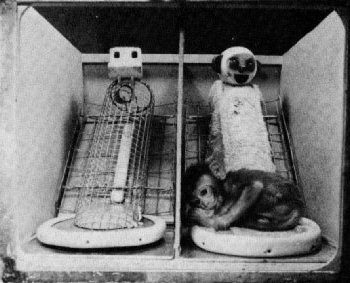
The baby monkeys overwhelmingly preferred the cloth mother. They would only visit the wire mother when they were hungry, because the milk bottle was inside it, then always returned to the cloth mother. Harlow guessed the baby monkeys preferred the cloth mother because it felt more like their real mother and provided a kind of contact comfort that the wire surrogate could not.
Some of Harlow’s other experiments also showed how infants use the mother as a base of exploration, even with a fake surrogate mother. When an infant monkey was alone and something novel was placed near it like a noise-making teddy bear, they would become paralyzed with fear and huddle into a ball. But if they were with the surrogate mother in this situation, they would at first hide behind the mother, then slowly become curious and approach or even attack the novel object. This of course mimics what happens with human kids. At a playground, when a kid gets hurt or scared, they run back to mommy who reassures them, and soon they feel calm enough to explore again.
Childhood adversity comes in many forms and has many long-lasting negative effects. This adversity isn’t limited to maternal deprivation, but includes being abused, neglected, witnessing violence and so on. Studies show the more types of adversity someone faces in childhood, the more likely they are in adulthood to have depression, anxiety and increased impulsivity, substance abuse, antisocial behavior and violence.
Thus, childhood adversity can atrophy and blunt the functioning of the hippocampus and frontal cortex. But it’s the opposite in the amygdala—lots of adversity and the amygdala becomes larger and hyper reactive. One consequence is increased risk of anxiety disorders; when coupled with the poor frontocortical development, it explains problems with emotion and behavior regulation, especially impulse control.
However, there is a caveat here. Many people suffer extreme adversity and still end up as very functioning adults. Keep this in mind. So although childhood adversity can make someone more likely to have certain challenges later in life, none of it is guaranteed or set in stone.
Play
While we’re talking about childhood, let’s quickly discuss play too. Animals of many species play and frolic with their peers. Have you ever wondered why? Scientists say it’s a powerful way for kids to learn social competence, including their place in the hierarchy, cooperation and moral rules.
One type of play males do more often than females is what Harlow called “rough and tumble” play. This includes small elements of aggression but not with the intention to cause harm. Like kids wrestling, puppies playfully biting each other or young lambs butting heads. This kind of behavior is likely practice for future status competitions.
Until the 1950s, people didn’t know that maternal deprivation could cause severe health effects, increasing kids death rates in hospitals. Harry Harlow showed with many baby monkey experiments the importance of a mother’s warmth and presence for infant development, that it wasn’t just about food and shelter.
🧬 8. Epigenetics: Environmental factors can alter our gene expression
In pop culture, genes are almost synonymous with determinism. Like when some people see a bodybuilder with huge muscles they say, “It’s in their genes.” They mean the reason that person can build muscles (and they presumably can’t) is because of some inherent genetic advantage.
As we’ll explore in this lesson, the modern scientific understanding of genes is far less black and white than this. Although certain genes do determine our hair and skin colour, for example, most other personal traits are not caused by genes, but merely influenced by them. And our environment also plays a huge role in how our genes are ultimately expressed. In short, our genes don’t determine very much, but they influence everything.
First a crash course in basic genetics
Our genes are made of long strings of DNA. I’m sure you’re familiar with the iconic double helix shape of DNA. Our DNA is like a code written with sequences of 4 different “letters” called nucleotides. This code provides the blueprint for how to construct proteins, which are the building blocks of our bodies. Proteins make up our skin, hair and organs, and proteins create other molecules we need like hormones and neurotransmitters. You inherit half of this inner blueprint from each parent.
But how exactly is the DNA code converted into proteins? Well, inside our cells, parts of our DNA are first “photocopied” to a smaller more agile molecule called RNA, which makes it easier to manufacture proteins in different corners of the cell. Next ribosomes read the RNA instructions and construct the proteins. So DNA makes RNA makes proteins, this is a central foundation of genetics.
But how do our cells know which sections of DNA to copy and when? It’s a different kind of protein called a transcription factor that regulates this whole process. We have about 2600 types of transcription factors in our bodies, which turn certain genes ‘on’ or ‘off’, resulting in more or less production of specific proteins. But then what controls or regulates transcription factors? The answer throws a huge wrench into genetic determinism: the environment. For example, when a mother smells her newborn child, her nose receptors send a message to the hypothalamus in the brain to activate certain transcription factors, leading to more oxytocin production, leading to milk secretion so the infant has food.
This leads us to the fascinating study of Gene/Environment interactions.
Pop culture has long repeated the idea there is a gene for everything. A gene for depression, a gene for height, a gene for weight. What science has actually found is that the same gene can have different effects depending on your environment and upbringing. For example, there’s a gene called 5HTT that has to do with removing serotonin from synapses. And a certain type of 5HTT gene seems to increase risk of depression… buuuut (and here’s the important part) only in people who’ve experienced childhood trauma. So if you have the gene and childhood trauma, your risk of depression increases. If you have the gene but no trauma, your risk is no different than normal.
In fact, the 5HTT gene is a rare example of a gene that can be isolated to have some measurable effect. In most cases, hundreds or thousands of genes will play a role in a single trait like height, let alone complex behavioural traits like aggression. This means the individual effects of any single gene are generally tiny and very difficult to measure.
However, while scientists have found it hard to isolate the effects of any single genes, it is possible to study the effects of our genes in general. And the genes we inherit strongly affect many parts of us, including personality traits like IQ, extraversion, agreeableness, neuroticism and our risk for depression, autism, gambling, alcoholism and schizophrenia. Scientists have found genes influence even obscure personal quirks like political involvement and texting frequency among teenagers.
But how can scientists isolate the effects of genes vs. environment, nature vs. nurture?
Well, they’ve found some creative ways:
- First, identical twin studies have been very useful because identical twins share the same genes. So for example, if we know that when one twin gets schizophrenia, 50% of the time the other one does too, then we know that schizophrenia is 50% genetically determined.
- Another method is to study people adopted at birth. Imagine 100 people born in Germany then immediately adopted into France. Well, the differences between these people and biological Germans raised in Germany can provide a lot of insight into the effects of genes vs. environment.
- Finally we have the holy grail: Identical twins, separated at birth and adopted into different households. In 1979 Thomas Bouchard at the University of Minnesota began studying twins like this and eventually he would study over 100 pairs. They share the same genes, but different environments, so consistent similarities can be attributed to genes.
Although genes influence most things about us, they don’t really determine anything. Part of the reason for that is our genes themselves are regulated by transcription factors, which are affected by the environment. This leads to many genetic effects only being expressed in certain circumstances, like how having the 5HTT gene can increase depression risk, but only in people who experienced childhood adversity. How do scientists know what things are caused by genes or environment? One way is by studying the similarities and differences between identical twins, adopted people, and the holy grail: identical twins adopted into separate households.
🌍 9. Evolution: Both animal genes and social behaviors evolved through natural selection and sexual selection
Again we follow the pattern found throughout this book of taking a step back. We’ve just learned a little about how genes work, so now we step back to answer the question: Why do we have certain genes and not others?
The first reason we carry certain genes is natural selection, often thought of as “evolution.” This is the natural process that happens when certain genes help us to survive and therefore are more likely to be passed along into future generations. For example, if an impala has genes for longer legs, then it can run faster. So it can outrun the shorter-legged impalas when they are being chased by lions. Eventually, the shorter legged impalas keep getting eaten, while the impalas carrying the genes for long legs can survive longer and have more babies. In this way, genes for traits that help an organism survive (like teeth, claws or an immune system) are more likely to be passed down over generations.
Another reason for an animal having certain genes is sexual selection. This is a bit different. It’s what attract’s mates, and sometimes this can even contradict natural selection. For example, the incredibly colourful feather display of a male peacock. It’s enchanting for the female peacocks, but makes the male a much more conspicuous target for predators.
Infanticide
The new fields of sociobiology and evolutionary psychology were founded on the stunning insight that evolution may have shaped not just physical traits, but animal behaviours as well.
For example, one darker side of animal behavior that was probably shaped by evolution is competitive infanticide. In 1977, Harvard scientist Sarah Blaffer Hrdy was shocked to realize the langur monkeys she was studying in India sometimes killed one another. Specifically, it was male adults killing infants.
After eliminating other explanations for this behavior, she came up with one reasonable theory. Female langur monkeys live in groups with one resident breeding male, the male being toppled from this dominant position by another male every 27 months on average. So imagine that a new male has just replaced the old one in a group. All around him are infants that are not his taking up the energy and resources of the females, and the females who are nursing infants are not ovulating. Well, the male might be replaced by another guy before the infants grow up, but killing the infants solves his problems. The females go into ovulation and he can then breed with all of them, resulting in more of his own offspring.
Even more surprisingly, some female langur monkey seem to have evolved their own behavioural strategy to counter this. They hide their infant in a bush and go into a kind of fake heat, they appear to be ovulating but actually aren’t. The new male breeds with them and tomorrow when he sees her carrying a baby he will assume it’s his.
Competitive infanticide has now been observed in 119 other species, including lions and hippos. Chimp females will sometimes kill infants of unrelated females too. And we’ve all heard you’re not supposed to put a male hamster in a cage with hamster babies because he’s genetically programmed to kill them.
Pair-bonding vs. Tournament Species
Now let’s talk about a different kind of behavior which is also probably coded into genetics. When it comes to mating and parenting, scientists can categorize primates as either pair-bonding or tournament species. What does that mean?
Well, in a pair-bonding species, as the name implies, males and females are mostly monogamous. The males help raise the kids after birth. On the other hand, in tournament species, females take care of kids on their own and interestingly, only about 5% of males actually mate and pass on their genes.
In pair-bonding species, the males and females look very similar, the same size, weight and appearance. You’d have a hard time telling them apart. This includes gibbons and most New World primates. But in tournament species, males and females look very different. The males are usually much larger than females and may weigh twice as much. Males may look different in other ways too. For example, male rhesus monkeys have large sharp canines despite being vegetarians, male mandrill monkeys have very colourful red and blue faces (think Rafiki in The Lion King), and we all know the typical gorilla alpha male thumping his huge chest. Most Old World primates like chimpanzees fit into the tournament category. In tournament species, the males also have much larger testicles and higher sperm count than pair-bonding species.
A large difference in appearance between sexes of an animal species is called sexual dimorphism. And the more sexually dimorphic a primate species is physically, the more likely that it’s a tournament species when it comes to mating and parenting. The difference can probably be explained by mating behavior. In tournament species, the males intimidate and fight each other for mating rights, so only the largest and strongest male ends up mating with all the females. At the same time, the females are looking for the best genes, so they choose the male who appears fittest or healthiest. In pair-bonding species, the strategy is less about the acquiring the best genes and more about choosing a father who will help raise the kids. It’s a different gene survival strategy. And in short, it’s incredible that you can predict so much about the social structure of a primate species with just one look at them.
This brings us to an obvious but sensitive question: are humans a pair-bonding or tournament species? On one hand, in almost all human societies, most people get married. On the other hand, most human societies throughout history have tolerated polygamy and behaviors like divorce, promiscuity, cheating and jealousy are widespread. Looking at human physical differences between the sexes, men are about 10% taller and 20% heavier than women. This suggests we’re not totally a pair-bonding species, but the difference is also not large enough to make us a tournament species either. We’re somewhere in between, and maybe that explains why so many of us are confused and conflicted when it comes to mating, relationships and marriage.
Genes have been shaped by both natural selection and sexual selection. Genes which led to traits that helped us survive were more likely to be passed down, as were genes for traits that were simply favoured by the opposite sex. Sociobiology is the study of how genes may influence animal behaviors, like in the case of competitive infanticide. Adult monkeys, hippos, hamsters and more kill other’s kids to increase their own kid’s chances of surviving. In primates, the difference between pair-bonding and tournament species is reflected in both their mating and parenting behaviors, as well as their physical appearance and the sexual dimorphism between males and females.
⚔️ 10. Us vs. Them: Brain mechanisms drive in-group cohesion and intergroup conflict
In many animal species, there’s a common pattern of hostility towards strangers of their own species. Chimps and baboons sometimes kill members of other groups they encounter. Jane Goodall was first to witness a long-term 4 year war when the chimp group she was studying split into two opposing groups. She saw things that gave her nightmares for years afterwards and totally shattered her image of chimps as more peaceful and primitive humans.
Human history is also full of examples of humans dividing themselves into groups of Us and Them, leading to violent conflicts. The first example that comes to mind is the Holocaust, where Nazis defined “them” as being the Jewish people. Eric Hoffer, who studied the rise of mass movements like Nazism, wrote:
Mass movements can rise and spread without belief in a God, but never without belief in a devil. When Hitler was asked whether he thought the Jew must be destroyed, he answered: “No… We should have then to invent him. It is essential to have a tangible enemy, not merely an abstract one.”
– Eric Hoffer, The True Believer
What’s more than a little discouraging is there seems to be some biological basis for racial bias, with slightly different brain activation being measured when someone sees photos of people of other races.
“Our brains form Us/Them dichotomies with stunning speed. […] Fifty-millisecond exposure to the face of someone of another race activates the amygdala, while failing to activate the fusiform face area as much as same-race faces do—all within a few hundred milliseconds. Similarly, the brain groups faces by gender or social status at roughly the same speed.”
The 4 categories of “others”
Psychologist Susan Fiske created a fascinating “stereotype content model” that gives more detail and insight into how people categorize others. This model says humans generally stereotype out-groups along two dimensions: Warmth and Competence. Warmth means: Do these people mean to help or hurt me? And Competence means: How effective are these people at getting what they want?
Researchers found these dimensions by analyzing common stereotypes. So for example, some groups are often stereotyped as low in warmth but high in competence, this includes the rich, Jewish or Asian people. With these groups people tend to feel envy. Other groups are perceived as low in warmth and low in competence, this includes the poor, homeless and welfare recipients. With these groups, people tend towards the emotion of disgust. Next we have groups seen as high in warmth but low in competence, like the elderly and disabled. These groups are associated with pity. And finally we have the group of high warmth and high competence, which is usually seen as a person’s own group, “Us”, and this is associated with pride.
When hate, hostility and violence occurs between groups, it’s almost always directed towards those perceived as low warmth, those who cause feelings of envy or disgust. For example, during the Cultural Revolution in China in the 1960s, the intellectual, artistic and religious elites were publicly humiliated and sent to labour camps. In Nazi Germany, it was the Jews who were both envied and hated, used as scapegoats for Germany’s economic problems and loss of World War 1, portrayed as greedy money lenders, the Jewish people were captured and sent to work themselves to death through slow starvation. In contrast, disabled Germans (probably perceived as high warmth / low competence) were quietly put to sleep inside hospitals. Thus, envy and resentment can be a strong emotion that can be stoked by propagandists leading to violent results.
Disgust and “Thems”
The emotion of disgust is also very commonly associated with enemies. What is disgust? It’s the feeling you get when the part of your brain called the insula activates. This might happens when biting into rotten food, and it seems to be a defense against pathogens. The insula also typically activates when people are shown pictures of drug addicts or homeless.
Disgust can also be highjacked by propagandists to create division, hatred and violence towards a defined group. In 1994 the Rwandan genocide occurred and over one million people of the Tutsi minority were murdered. Now, it’s no accident that for a long time before the machetes came out, many radio stations run by the Hutu majority constantly referred to the Tutsis as cockroaches. Animals like cockroaches and rats trigger disgust, when most people see one they want to get rid of it as fast as possible. Connecting a certain ethnic group with cockroaches is a fast way to make people feel disgusted by them, leading to violent impulses.
It’s interesting that social conservatives have been measured to feel disgust more easily. One study found that if you put people into a room with a stinky garbage can, they become more socially conservative. In fact, Leon Kass, who was the head of George W. Bush’s bioethics panel (and also very anti-abortion, even restricting stem cell research)… he argued for “the wisdom of repugnance” saying disgust can be a deep and wise moral intuition.
People with the strongest negative attitudes toward immigrants, foreigners, and socially deviant groups tend to have low thresholds for interpersonal disgust (e.g., are resistant to wearing a stranger’s clothes or sitting in a warm seat just vacated).
Encouraging Community and Unity
Let’s finish this summary on a lighter note, and it’s this: Just as people can be provoked to feel more negative, envious, disgusted or hateful to an outside group, they can also be encouraged to feel more connected and united with others too. Several methods have been found to decrease the biases that people have towards those perceived as “others.”
For example, using a method called individuation. People generally see “Us” as individuals and “Them” as a homogeneous threatening mass. “They” must be all the same. To counter this, we can invite someone else to see an out-group member as an individual. For example, when seeing a homeless person we can think “what kind of food might they enjoy?” and this will make us think of them more as an individual and lessen that automatic stereotyping.
Here’s another method called “contact theory.” In the 1950s psychologist Gordon Allport believed that the right kind of contact between groups of people can lessen biases. This contact must be the right kind to work, thought. Both groups must be treated equally with differences in age, education, wealth and skill minimized. Also the groups should not compete, but be working together towards a common goal on neutral territory. So for example, a 2003 study found that white athletes who played team sports with black teammates (basketball or football) reported less prejudice than those who played individual sports (swimming or track).
And finally I’ll share one of the most inspiring examples of people uniting despite the group definitions imposed on them. It’s well documented that in times of war, enemy soldiers sometime fraternize with each other, exchanging news or bartering cigarettes. During World War I trench warfare, informal agreements of mutual restraint often happened spontaneously. This means both sides avoided bombing easy targets like latrines or wagons delivering food. Why? Well, the soldiers from both sides were actually in the same boat, miserable and muddy. They didn’t want life to be any worse than it already was, which is what would happen with ruthless bombing. Many soldiers actually wrote in their journals about the respect they had for the tough soldiers on the other side, perhaps more respect than their own commanding officers and conniving politicians.
The most famous of these informal agreements was the Christmas Truce of 1914, when German, French and English soldiers all spontaneously decided to stop fighting. They crossed the trenches, held joint funeral services, exchanged food and souvenirs, sang carols together and played football with each other. In the midst of years of violence, it was a beacon of peace.
Both nature and human history is full of examples of groups fighting violently with perceived strangers and outside groups. Propagandists often stir up emotions of envy and disgust towards an out-group before violence breaks out, as happened during the Holocaust with Jews portrayed as greedy money lenders and the cause of all Germany’s problems, and during the 1994 Rwandan Genocide the Tutsi often called cockroaches. On a lighter note, people can lessen biases through methods like individuation and neutral contact, and even in the midst of war enemy soldiers sometimes befriended and respected each other.

